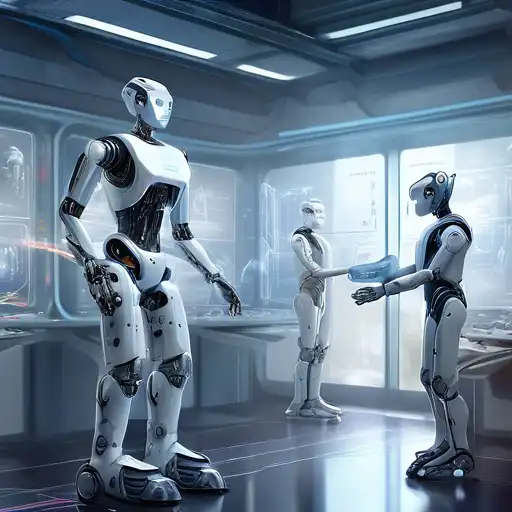The Dawn of a New Era in Robotics
The integration of Artificial Intelligence (AI) into robotics is not just an advancement; it's a revolution that's setting the stage for a future where machines can think, learn, and adapt. This fusion is transforming industries, from manufacturing to healthcare, and redefining what robots are capable of achieving.
Understanding AI Integration in Robotics
At its core, AI integration in robotics involves embedding intelligent algorithms that enable robots to perform tasks autonomously, make decisions based on real-time data, and learn from their experiences. This is a significant leap from traditional robotics, which relies on pre-programmed instructions.
The Impact of AI on Robotics
The impact of AI on robotics is profound. Robots are now capable of performing complex tasks with precision and efficiency, reducing human error and increasing productivity. In sectors like healthcare, AI-powered robots are assisting in surgeries, while in agriculture, they're optimizing crop yields through precision farming.
Key Benefits of AI in Robotics
- Enhanced Efficiency: AI enables robots to process information and execute tasks faster than ever before.
- Improved Accuracy: With AI, robots can achieve unparalleled accuracy, especially in tasks requiring precision.
- Adaptability: AI-powered robots can adapt to new tasks and environments without extensive reprogramming.
- Cost Reduction: Over time, the integration of AI can lead to significant cost savings by optimizing operations and reducing waste.
Challenges and Considerations
Despite the benefits, the integration of AI into robotics presents challenges, including ethical considerations, the need for robust cybersecurity measures, and the potential impact on employment. Addressing these concerns is crucial for the sustainable development of AI-powered robotics.
The Future Outlook
The future of robotics with AI integration is bright, with endless possibilities. From autonomous vehicles to robotic assistants in everyday life, the potential applications are vast. As technology advances, we can expect to see even more innovative uses of AI in robotics, further blurring the lines between human and machine capabilities.
For those interested in the intersection of technology and innovation, the evolution of robotics through AI is a fascinating area to watch. The journey ahead promises to redefine our understanding of what robots can do and how they can enhance our lives.
